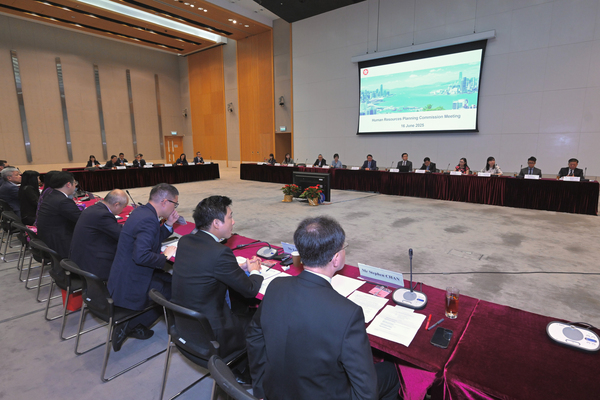
Chief Secretary Chan Kwok-ki today chaired the second meeting of the fourth-term Human Resources Planning Commission, during which he introduced the work of the Committee on Education, Technology & Talents (CETT).
Chaired by the Chief Secretary, the CETT co-ordinates cross-bureau efforts to drive technological innovation, industrial innovation and the co-ordinated development of human resource supply and demand on the basis of strategic positioning and advantages of the “eight centres”, while flexibly bringing in and gathering talent from various sectors to build an international hub for high-calibre talent to contribute to the high-quality development of the country.
The Education Bureau introduced the work on the development of universities of applied sciences (UAS). The commission members supported the Government’s efforts in related fields and gave opinions on the work plan of the Alliance of UAS.
Meanwhile, the Security Bureau briefed the meeting on the measures to facilitate the two-way flow of Mainland and Hong Kong high-end talent. The commission members were pleased to note that the measures would enhance the Greater Bay Area’s strategic planning on the mobility of talent and expedite the development of a talent hub in the bay area, fully reflecting Hong Kong’s distinctive advantages of being closely connected to the world with the strong support of the motherland under “one country, two systems”.
The commission was also briefed by the Labour & Welfare Bureau on the arrangements for admission of professionals of specified skilled trades to Hong Kong. The new arrangements, formulated under the CETT’s steer, allows young and experienced non-degree professionals to apply for entry into Hong Kong under the designated employment policy and talent scheme to join eight skilled trades facing acute manpower shortages.
Applications will be accepted starting June 30 for a period of three years, with an overall quota of 10,000 and the quota for each skilled trade is limited to 3,000. The commission welcomed the new arrangements and anticipated it would effectively address the shortage of mid-level technical professionals and inject new impetus into the relevant trades.





















